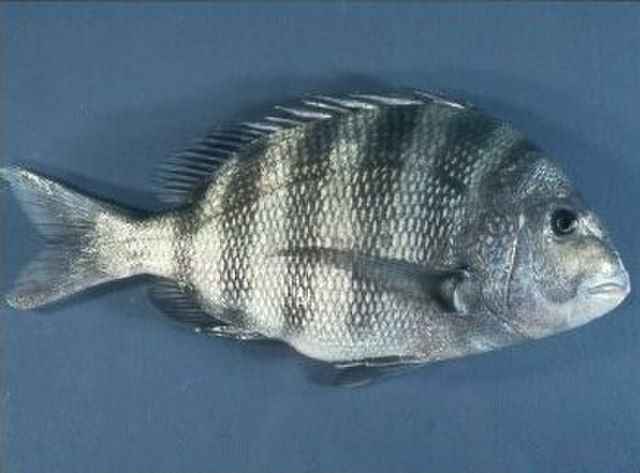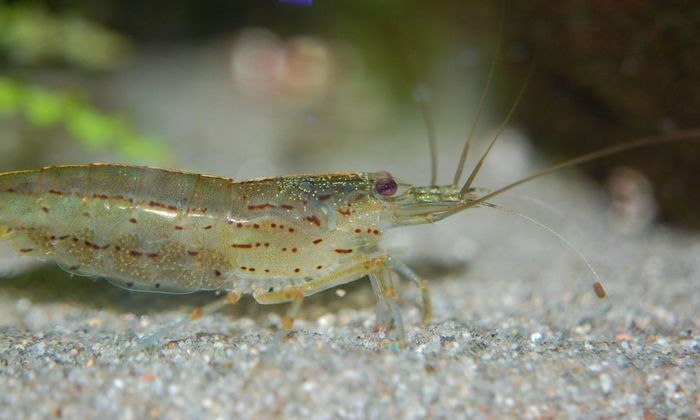Sheepshead Fishing: How to Rig Live Shrimp
Heading out for some sheepshead action? Learn how to rig their favorite bait—shrimp!

Sheepshead provides a productive year-round fishing experience for anglers who like to cast their lines at any given time of the year. The good thing about these species is they are relatively easy to find. They make winter fishing a fun experience due to their abundance, especially from December to April. Colder months impel sheepshead to muster around places like pilings of bridges or piers, docks, jetties, deep holes, rocky bottoms, mangroves, or any underwater structures and obstructions with deep water access. Casting a rod and fly fishing in the shoreline is one of the most common ways to do sheepshead fishing because it is near the structures. But drift fishing does the trick as well, and being on a boat sometimes gives more access advantage.
Understandably, people sometimes confuse sheepshead with black drum. After all, the two share the same noticeable physical attribute: dark black bars on the sides of its gray body. This should not be a problem because it is also easy to tell them apart by looking at their mouths. While sheepshead have teeth resembling a human’s, black drum have no real teeth in their sandpaper-like gums. Sheephead’s hard mouth and stubby teeth project similarities with a sheep’s muzzle, hence being dubbed its name. Together with their pallet full of grinders, their teeth help them crush the shells of their favorite crustacean and mollusk meals. Sheepshead predominantly eat shrimps, fiddler crabs, clams, oysters, squids, mussels, scallops, and small fish such as juvenile Atlantic croaker. When attempting to catch these striped species, using their usual diet as bait increases the likelihood of a bite; however, live shrimps are one of the most effective baits for sheepshead fishing.
Why Do Shrimps Make a Good Bait for Sheepshead

1. Availability
Shrimps are easy to acquire. They are readily available in the market, whether dead or alive. These crustaceans are reasonably cheap, and since they are naturally in the water, anglers can even catch shrimps themselves, free of charge.

2. Aroma
Fish are attracted to the odor of their prey. A shrimp’s unique scent is very appealing to fish. They give off a certain aroma that is very distinctive even from far away. They have an oily texture that helps keep this smell for longer periods.
3. Action
Although frozen or dead shrimps can be an effective bait, a live shrimp is often the better choice. Since they are common in saltwater environments, they appear to be more natural, especially when alive and kicking. The movements of a live shrimp in the water are very appealing to a hungry predator.
Rigging a Live Shrimp
1. Knowing the Right Hook
While bait is important, the hook is still a crucial part of sheepshead fishing since they are notorious for stealing bait. Getting a good puncture up their mouths depends on the hook. As the sheepshead’s hard muzzle is filled with actual teeth and grinders, very few spots are left for a hook to pierce. Because of this, the best hooks to use when rigging a shrimp are those that can penetrate and secure easily, like a circle hook or an octopus hook. Since their mouths are hard, using a small 1/0 or 2/0 hook is enough to ensure a better tug when it goes up the sheepshead’s mouth—using a circle hook, directly pulling the line up after the bite allows the hook to do the piercing.
2. Attaching the Shrimp
Making sure that the shrimp is not killed in attaching it to the hook is the number one thing to look out for when rigging them. There are two ways this can be done, depending on the rig. One is through the head of the shrimp, and the other is through its tail end.
Head
Tear the tail of the shrimp to bring out more aroma. Then, pierce the hook sidewards through the clear spot on its carapace, underneath the horns. Make sure not to stick too far back to avoid killing the shrimp. Hooking through the head allows the shrimp’s body to move freely and draw sheepshead attention.
Tail
Pinch the shrimp’s tail off. Start hooking inside the shrimp where the tail was taken, making sure that the legs face outwards and away from the hook’s point. Slowly penetrate until the point reaches the center of the shrimp, and then let the point protrude out of the shrimp’s back. This way, the shrimp can move freely and swim straight forwards in the water.

3. Rigging the Shrimp
Here are some of the most efficient rigs that go with a live shrimp.
Weedless Rig
This rig is perfect for preventing the hook from catching on the structures. Pierce the live shrimp using an octopus hook on its tail and add an egg or bullet weight. The weight will depend on the current. Note that the lighter the weight, the easier it will be to feel the sheepshead biting on the bait.
Freeline Floating Rig
This is the most straightforward way to rig a live shrimp. Attach the shrimp to an octopus hook and let it freely swim around. This rig is perfect when a sheepshead has already been sighted. They often spend time in structures to feed on barnacles, keep on the lookout, and cast a free line where they gather. This rig is more efficient with little to no current.
Popping Cork Rig
Secure a live shrimp on an octopus hook through its head. Tie a cupped or an oval popping cork to a line and attach the leader line with the hooked shrimp. Popping Cork Rig works best in areas where there is a current.
4. Casting the Line
Where to cast is a crucial thing to consider when angling for sheepshead. Besides going to locations with underwater structures where sheepshead hang around, find areas with current that will help spread the shrimp’s scent and aid it in its movements. Be careful of other fish that can potentially nick and nibble on the shrimp when doing so.



